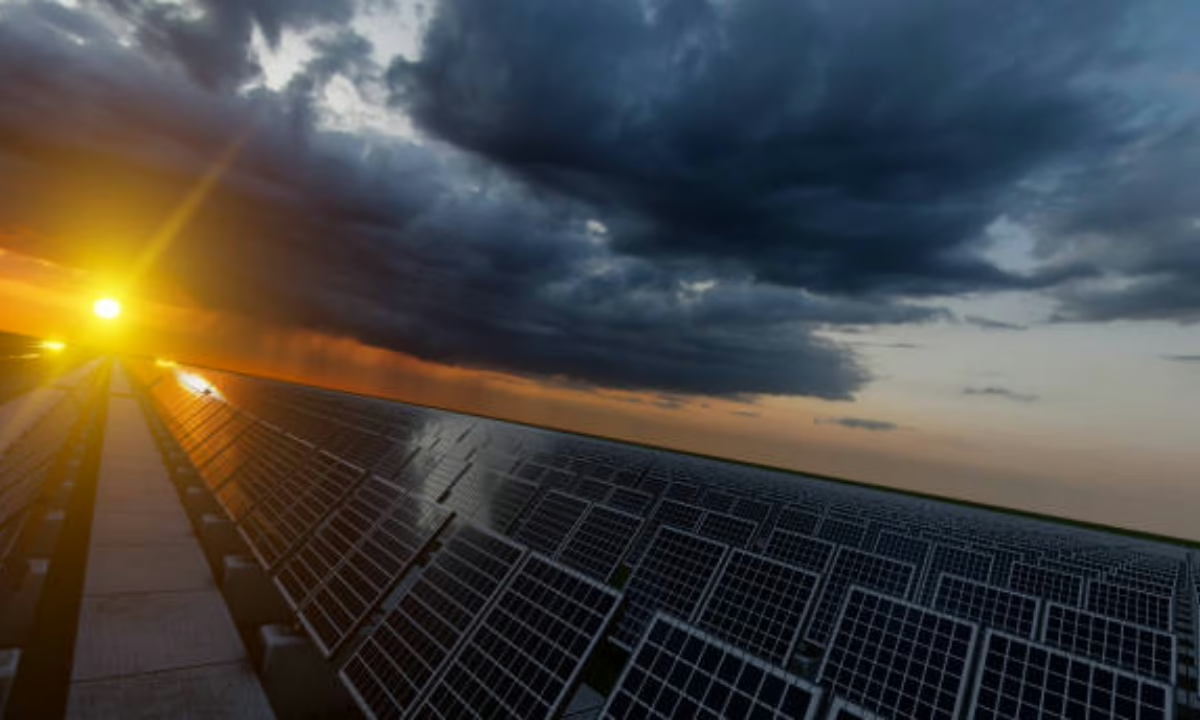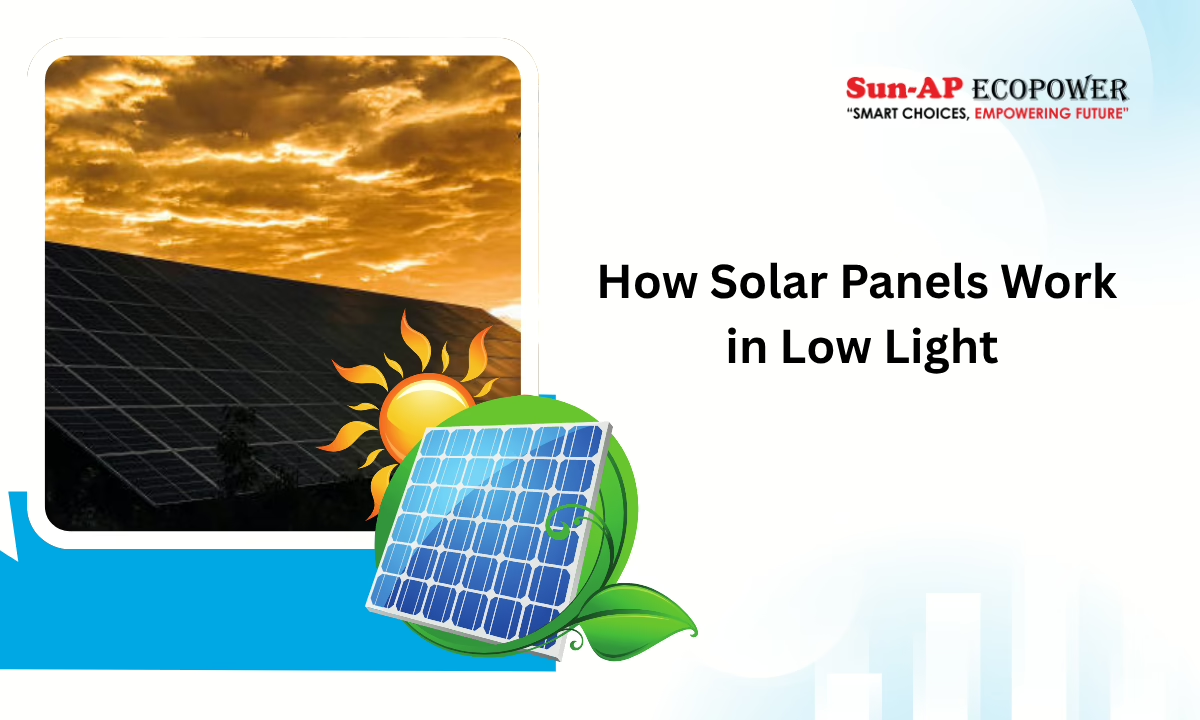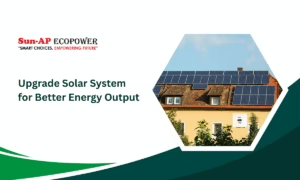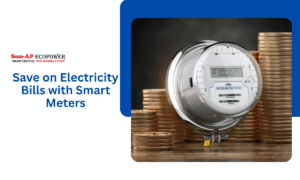When we install and service solar systems, one of the most frequent questions we hear from customers is: “Do solar panels still work when it’s cloudy or raining?” The simple answer is yes, solar panels continue to generate electricity even in low-light conditions, but the amount and efficiency will vary depending on technology, angle, and ambient light conditions.
In this article, I’ll walk you through exactly how solar modules work in rain or diffused light, what role reflected light plays, and how different panel technologies, monocrystalline solar panels, polycrystalline solar panels and bifacial solar panels, behave in less-than-ideal conditions. I’ll also touch on the inverter side of things, and how you can choose good Solar Panel & Products Dealers in India.
How Light Reaches Solar Panels even on Cloudy or Rainy Days

When the sky is overcast or light is scattered, solar modules don’t simply stop working. Here’s why:
- Diffused light: Even when direct sunlight is blocked by clouds, the sun’s rays still scatter through the atmosphere and reach the panel surfaces. Solar cells capture that scattered or diffused light and convert it into electricity. References show that modern modules continue producing under diffused conditions.
- Reflected light: Light that bounces off surrounding surfaces (roofs, walls, ground) can also contribute to the irradiance the panel receives. Especially for bifacial modules, reflected (albedo) light from the rear side improves yield in indirect lighting scenarios.
- Rain and “low-light” conditions: Rain typically reduces the amount of direct beam irradiance (sun shining directly) but does not eliminate the ambient light reaching the solar cells. Also, rain does the beneficial job of naturally cleaning dust/debris off panels, improving performance once the skies clear.
So, while performance drops when the sun is hidden, the system does not go offline.
Why the Role of the Solar Inverter Matters
Even if a solar panel continues to produce DC current in low light, the solar inverter (which converts DC to AC) must be efficient under varying input conditions. A good inverter handles lower voltages/currents well, manages fluctuations due to variable light, and ensures that power output is maximized even when light levels are reduced. At Sun-AP Ecopower, we make sure the inverter we pair with the panels supports low-light operation and has good performance under partial shading or diffused light.
Monocrystalline vs Polycrystalline Solar Panels in Low-Light Conditions
When someone is choosing panels for an installation in India (say a rooftop system in Bangalore or elsewhere), it helps to understand how the panel technology influences performance under low light:
- Monocrystalline solar panels: These are made from single-crystal silicon and typically have higher efficiency ratings, better light absorption, and better performance under lower irradiance compared to many other technologies. Because they capture more of the available light, they fare better when the light is diffuse or weak.
- Polycrystalline solar panels: Made from multiple silicon crystals, they tend to have slightly lower efficiency and may drop more in output under the same reduced light conditions. Nonetheless, they still produce power under diffused or rainy conditions.
In practical terms: if you expect more cloudy or rainy days, choosing a higher-efficiency monocrystalline solar panel helps maximize power even when light is sub-optimal. At Sun-AP Ecopower, for such conditions, we often recommend monocrystalline modules unless budget constraints strongly favor alternatives.
Bifacial Solar Panels: An Advantage in Low-Light / Reflected Light Scenarios
Bifacial solar panels are designed to capture light from both the front and the rear side. That means they can utilize reflected light from the ground or surrounding surfaces in addition to the direct or diffused sunlight from above. Here is why this matters:
- On cloudy days or when direct sunlight is limited, the relative contribution from reflected light becomes more significant.
- If panels are elevated or mounted in a way that allows rear-side exposure to reflected light (for example, facing a light-colored surface beneath), bifacial modules can give a performance boost in challenging light conditions.
- Studies show that under favorable albedo (reflected light) conditions, bifacial modules outperform standard single-sided modules by a noticeable margin.
At Sun-AP Ecopower, when we install for commercial or industrial use where mounting allows for rear-side exposure, we often propose bifacial modules to capture every ray of light, front or reflected.
Does Solar Module Technology Work in the Rainy Season?
Yes—it works, but with some caveats and practical expectations. As a worker on the ground at Sun-AP Ecopower, here’s how I explain it:
- During the rainy season, the skies are frequently overcast, and there may be heavy cloud cover, which reduces direct sunlight. The power output of the solar panels will drop relative to clear-sun conditions, but it will not drop to zero. For many installations, we see ~10–30 % of rated capacity during heavy cloud cover or rainfall conditions.
- The advantage: rain helps by cleaning the panel surfaces of dust and debris—so once the skies clear, the panels perform better than if they had stayed dirty.
- To make the system resilient in a rainy season, we advise:
- Proper tilt angle so water drains and panels remain clean.
- Avoid shading from trees or neighboring structures (shade amplifies the drop in low-light).
- Choose higher-efficiency modules and a quality inverter.
- Optionally pair with battery storage so you can store excess from sunnier intervals and draw during heavy cloud/rain days.
In short, Rainy season means reduced yield, but not a failed system, especially if designed smartly.
More Factors that Influence Low-Light Performance
As we at Sun-AP Ecopower often check during site surveys, some additional variables matter:
- Panel orientation and tilt: Even in diffused conditions, getting the orientation right ensures maximum capture of available light.
- Shading: Even small shadows reduce output disproportionately in low light; we always check for shading on any potential day.
- Cleanliness: Dirt, dust, and bird droppings block light; rain helps, but regular cleaning ensures better performance.
- Temperature: Interestingly, solar panels perform better at cooler temperatures; higher temperatures reduce efficiency. In rainy or cloudy weather, ambient temperatures may be lower, which slightly offsets the loss of direct light.
- System sizing and monitoring: At our installations, we include monitoring so we can observe output trends and detect issues early.
Choosing Good Solar Panel & Products Dealers in India
Since you’re investing in a solar system and expect reliable performance even in low light/rainy seasons, here’s what to look for in a dealer:
- Proven track record of installations in your climatic zone (e.g., Indian monsoon regions) and experience dealing with cloud/rain conditions.
- Transparent specification sheets: They should quote expected low-light performance, temperature coefficients, and module degradation rates.
- Quality of components: High-efficiency modules (monocrystalline or bifacial) + high-quality solar inverters that handle variable input well.
- After-sales service and maintenance: Cleaning, monitoring, and support during the monsoon/rain season.
- Warranty & performance guarantees: Modules and inverters should come with good warranties and ideally performance monitoring to validate generation.
At Sun-AP Ecopower, we ensure our clients receive detailed modelling of expected yield under rainy/cloudy conditions, and we fine-tune the system design for the local environment.
Wrapping Up
From my vantage point at Sun-AP Ecopower, solar panel & products dealers in India, I can confidently tell you that solar panels absolutely remain a viable and meaningful investment, even when the skies are grey, clouds gather, or the monsoon is in full swing. What matters is realistic expectation setting, intelligent design and selection of components, and taking advantage of technologies that maximize diffused and reflected light capture.
Here’s what we emphasize: choose the right panel technology for your environment (monocrystalline for general high efficiency, bifacial where mounting allows rear exposure), ensure your solar inverter is up to the job, design for tilt/cleaning/monitoring, and partner with a dealer who understands your local climate and long-term performance. With this approach, you’ll have a solar installation that doesn’t just sit idle when the sun hides—it keeps working, keeps producing, and keeps your investment returning value.
If you’re exploring solar for your home or business, especially in a region prone to clouds or rain, drop us a line at Sun-AP Ecopower. We’ll walk you through how your system can perform year-round, how the rainy season will affect yield (and how we mitigate that), and help you select the right modules and inverters for your situation.
Frequently Asked Questions (FAQs)
Q1: Will solar panels generate any electricity at all when it’s heavily overcast or raining?
Yes, they will. Although output drops compared to full sunshine, photovoltaic cells continue converting whatever light (diffused or reflected) reaches them. We typically model systems to expect reduced yield (often 10-30 %) in heavy cloud/rain scenarios.
Q2: Do monocrystalline solar panels perform better than polycrystalline in low-light conditions?
In general, yes. Because monocrystalline modules usually have higher efficiency and better light-absorption characteristics, they hold up better under lower irradiance than many polycrystalline modules.
Q3: Are bifacial solar panels worth it when many days are cloudy or rainy?
Yes, if your installation allows for rear-side exposure to reflected light (for example: elevated mounting over a light-colored ground or reflective surface). The extra captured light from the rear side helps boost yield even when direct sunlight is limited.
Q4: How much does rain reduce solar panel efficiency?
It varies widely depending on cloud density, tilt, shading, and technology. Some studies estimate output can drop to 10-20% of peak on very heavy rain with thick cloud cover. On lighter cloud cover days, performance may remain at 40-60%. We always model conservatively for each site.
Q5: Should I expect my system to go offline during the monsoon/rainy season?
No. If designed and installed properly, your system will continue to operate through the monsoon season. The output will dip compared to sunny periods, but will not cease. The key is proper design, component choice, angle, shading avoidance and good dealer support.




